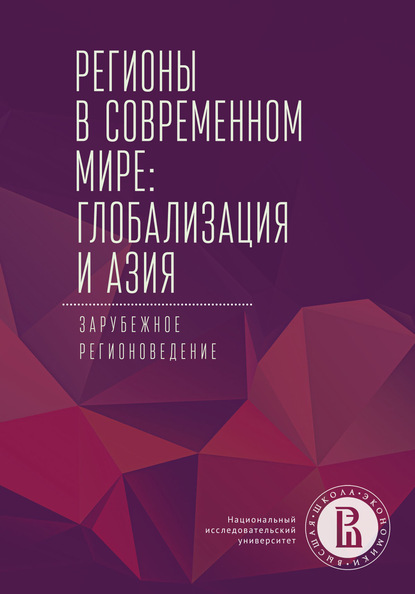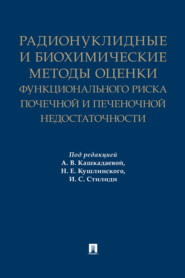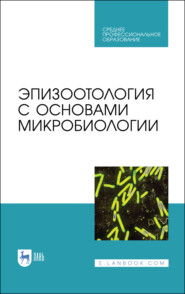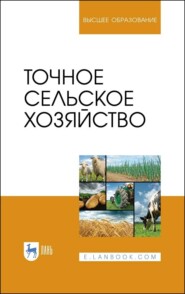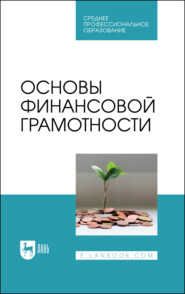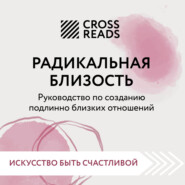По всем вопросам обращайтесь на: info@litportal.ru
(©) 2003-2024.
✖
Регионы в современном мире: глобализация и Азия. Зарубежное регионоведение
Автор
Год написания книги
2020
Настройки чтения
Размер шрифта
Высота строк
Поля
According to the project, it is expected that there will be three main routes of the Economic belt: North – from China through Central Asia and Russia to the Europe, Central – from China through the Central and West Asia to the Persian Gulf and the Mediterranean Sea, South – from China to the Southeast and South Asia to the Indian Ocean. Within these areas it is planned to create international corridors: China-Mongolia-Russia, China-Central Asia-West Asia, China-Indochina, China-Pakistan, Bangladesh-India-Myanmar-China.
The Chinese project is an open initiative and any country can join it. In 2019 China has already signed 173 agreements according to the participation in the project with 125 countries and 29 international organizations. It is interesting that over 60 countries joined the project only in 2018. The project has been so deeply integrated into China’s foreign policy that it was mentioned in the Charter of the Communist party of China in 2017[31 - Manukov S. One belt and one road, the clarification path and the extension zone // EurAsia Daily, 03.05.2019. URL: https://eadaily.com/ru/news/2019/05/03/odin-poyas-odin- put-utochnenie-puti-i-rasshirenie-poyasa (date of access: 14.12.2019).].
The scale of the project «One belt – one road» is enormous from the different points of view. For persuasiveness we can give some statistics. Morgan Stanley estimates that by 2027 the project will cost approximately $1.3 trillion. The Chinese banks and financial institutions, mostly state-owned, have invested more than $90 billion in this project. The reason is this project is widely supported by the Chinese government. China’s partners have invested more than $ 40 billion in the Chinese economy. The volume of trade between China and «One belt – one road» participants, which exceeded $6 trillion, is impressive. The trade with project partners increases by an average of 4% per year. Over the six years of the project’s existence it accounted for 27.4% of the Chinese trade in whole[32 - Ibid.]. So, the project has a huge multiplier effect and is very attractive, not only for China, but also for other countries.
One of the active participants of the concept of «One belt – one road» is Russia, supporting it from the very beginning of the project. It is necessary to mention that at present the economic relations between China and Russia are developing very dynamically and positively. The impulse for strengthening cooperation between our countries can be considered the introduction by Western countries sanctions in 2014 against Russia and a turn of Russian foreign economic and political strategy towards the Asia-Pacific region, in particular China.
For optimal cooperation between Russia and China it is important to combine the mutual interests of both countries. The interests of the Russian Federation are related to the deepening of strategic partnership with China, in particular within the framework of the Eurasian economic Union [Efremenko, 2018. P. 48]. China relies on further rapprochement with Russia to ensure stability in the North and a strong strategic rear, investment, trade and economic energy cooperation.
On the 8th May 2015 as part of the institutionalization of cooperation Russia and China signed a Declaration on the interconnection of the Eurasian economic Union and the Silk Road Economic belt. The Declaration identified key directions of contact: investments in industrial cooperation, a development of a common logistics system, a harmonization of foreign trade legislation, a strengthening of the role of joint financial institutions and expansion of foreign exchange cooperation in the field of foreign trade. In 2016 the Memorandum according to the coordination of joint efforts to promote economic and investment cooperation in various international platforms was signed.
In May 2018 another agreement on cooperation in the economic sphere between the Eurasian economic Union and China on trade policy, technical regulation, phytosanitary control was signed. The harmonization of norms and removal of restrictions will certainly give impulse to the development of cooperation. On the 17th October 2018 during the meeting in Beijing it was proposed to accelerate the pairing of projects within the framework of the «One belt initiative”[33 - China urged to speed up the pairing of the EAEU with the project «One belt – one road», 17.10.2018. URL: https://www.vestifinance.ru/articles/108722 accessed 13.12.2019.] [Efremenko D. 2018]. This idea was also discussed at the fifth Eastern economic forum in 2019[34 - Eastern economic forum 2019. URL: https://roscongress.org/events/vostochnyy-ekonomicheskiy-forum-2019/ (date of access: 15.12.2019).]. Thus due to the active political support and stimulation of joint projects there is a significant institutionalization of cooperation between the Eurasian economic Union, the Silk Road Economic belt, the Russian Federation and China [The strategy of «The Economic belt of the silk road» and the role of the Shanghai cooperation organization, 2016. P. 16].
The interaction between the Eurasian economic Union and the «One belt – one road» initiative is primarily considered from the point of view of the development of logistics infrastructure and the creation of transport corridors. The Eurasian economic Union has proposed 38 projects for joint financing with China, including 11 Russian projects[35 - Transit with a Chinese accent. 21.12.2017. URL: https://www.vedomosti.ru/newspaper/articles/2017/12/21/746034-tranzit-kitaiskim (date of access: 15.12.2019).]. Thanks to the support of China the construction and development of transport routes connecting Western China and Western Europe and the Northern Sea route are planned.
The implementation of these projects is perfect for China because it will reduce the speed of delivery of goods to the European market (which is especially important because a daily trade volume of China – EU is 1.5 billion euro) and to Russia, as it will help to develop national production and export potential. As to the Russia the transit potential of the TRANS-Siberian railway is not fully used and a participation in the Chinese project will strengthen its role. The most important infrastructure project of fundamental importance for economic partnership between Russia and China is a construction of a railway bridge over the Amur River. The financial operator of this project is the Russian-Chinese investment Fund, formed By the Russian direct investment Fund and China Investment Corporation.
According to the opinion of some experts, the increase in the supply of goods, including transit through the Russian Federation by the help of land transport on the route China-Europe is real, if infrastructure capabilities and increase capacity will be increased. The experts also note two problems. The first one is an imbalance of under loading of trains when they return. The other problem is investment. The participants of the new Silk Road, who take part in the project as transit points, are still afraid to invest in the project, so the main financial burden falls on China. The China’s participation in the Russian projects can be regarded as a «political investment». Despite the loud statements of politicians of the two countries the real results of cooperation between China and Russia in the framework of the project are very modest.
Among project consequences for Russia we can note the following. The participation in the project “One belt – one road” can lead to the integration of the Russian transport system into the transport and logistics network of the Eurasian region, which will open up opportunities for transit and provision of related logistics services and access to the markets of the region[36 - ?????????: “????” ?????????????? = The Chinese Ambassador to Russia Li Hui: «The one belt – one road” Initiative opens a new path for the joint development of China and Russia. Режим доступа: URL: https:// baijiahao.baidu.com/s?id=1610935269955576597&wfr=spider&for=pc (date of access: 18.12.2019).].
Of particular importance within the framework of the project is an interaction of our countries in the field of modernization of poorly developed regions of Siberia and the Far East, which need modern infrastructure and investment. As a concern, we can note a decrease of interest in the TRANS-Siberian and Far Eastern directions. The fact is that the route through Kazakhstan is beneficial for China both in terms of tariff rates and time. At present 10 of the 14 routes China–Russia are passing through Kazakhstan[37 - Where will the Silk Road lead Russia 27.04.2019. URL: https://newtvnews.ru/economics/2019/04/27/pan-ili-propal-kuda-zavedet-rossiju-shelkovyj-put/ (date of access: 16.12.2019).].
The second advantage is a strengthening of industrial cooperation between the countries, the possibility of forming production clusters. The third plus of the Russian participation in the project “One belt – one road” is a possibility of pairing the Eurasian economic Union and the «One belt – one road» and turning it into a new center of economic and political development at the global level. However, it is worth noting that China is mainly focused on the development of the bilateral relations with each member of the Union individually.
Lately China is accused of opacity and often enslaving terms of agreements, unfair choice of contractors, failure to meet deadlines, untimely provision of promised loans, construction of «white elephants», and damage to the environment. Thus, according to China Global Energy Finance database in 2018 the share of «coal» projects in the project “One belt – one road” was 42%[38 - Where will the Silk Road lead Russia 27.04.2019. URL: https://newtvnews.ru/economics/2019/04/27/pan-ili-propal-kuda-zavedet-rossiju-shelkovyj-put/ (date of access: 16.12.2019).].
Beijing is also accused of pumping the developing economies involved in the project with loans and debts. The West has even coined a new term – «debt trap diplomacy». In 2019 at the international cooperation forum “One belt – one road” in Beijing the Chinese President promised to become more open to Western investors. China assures the countries that the project has only an economic orientation; however, it is clear for everybody that by increasing economic power the country will gain geopolitical influence[39 - International experts positively assessed the results of the forum «One belt and one road» in Beijing 08.05.2019. URL: https://news.rambler.ru/other/42154117-mezhdunarodnye-eksperty-polozhitelno-otsenili-itogi-foruma-odin-poyas-odin-put-v-pekine/ (date of access: 14.12.2019).].
The resume
In summary it can be noted that a feature of the Russian and Chinese cooperation in whole and within the framework of the project “One belt – one road” can be called a high level of institutionalization. The economic process is mainly from the top supporting a high political activity of two countries. The Chinese investors act very carefully, and they prefer to conclude agreements rather than invest.
As practice shows a specificity of the Chinese approach is a long-term investigation of the market в длительных переговорных процессах and long negotiation processes that may end up with zero results. So during the reducing of its investments and withdrawing money from the Russian economy in 2018 and 2019 China refused to finance the pipeline “The force of Siberia”, invest in the construction of the Russia’s largest gas processing plant in the Amur region and considered the high-speed railway the Eurasia which was supposed to connect Beijing, Moscow and Berlin unprofitable. Chinese investment companies are often connected with the government financing therefore their investment decisions in many respects are not always motivated only by financial indicators. In our opinion at present the Russian participation in the project “One belt – one road” has mainly potential advantages and possibilities and real results for the Russian economy are very insignificant.
References
China in the world and regional politics. The history and modernity. Issue XXII /ed. Safronov E. Moscow: Institute of Far Eastern studies, 2017. 400 p. URL: https://publications.hse.ru/mirror/pubs/share/direct/211288436 (date of access: 18.12.2019). (in Russian)
China urged to speed up the pairing of the EAEU with the project «One belt – one road» 17.10.2018. URL: https://www.vestifinance.ru/articles/108722 (date of access: 13.12.2019). (in Russian)
Eastern economic forum 2019. URL: https://roscongress.org/events/vostochnyy-ekonomicheskiy-forum-2019/ (date of access:15.12.2019). (in Russian)
Efremenko D. The conjugation of the Chinese initiative «The Economic belt of the silk road» and the integration project «Eurasian economic Union» in the context of transformations of the modern world // History and modernity. Issue XXIII: annual edition / ed. by Safronov E. Moscow: IDV RAS, 2018. 392 p. (in Russian)
International experts positively assessed the results of the forum «One belt and one road» in Beijing 08.05.2019. URL: https://news.rambler.ru/other/42154117-mezhdunarodnye-eksperty-polozhitelno-otsenili-itogi-foruma-odin-poyas-odin-put-v-pekine/ (date of access: 14.12.2019). (in Russian)
Manukov S. One belt and one road, the clarification path and the extension zone // EurAsia Daily 03.05.2019. URL: https://eadaily.com/ru/news/2019/05/03/odin-poyas-odin-put-utochnenie-puti-i-rasshirenie-poyasa (date of access: 14.12.2019). (in Russian)
The strategy of «The Economic belt of the silk road» and the role of the Shanghai cooperation organization. The materials of the round table / ed. by Matveev V. Moscow: Institute of Far Eastern studies RAS, 2016. 172 p. (in Russian)
Transit with a Chinese accent. 21.12.2017. URL: https://www.vedomosti.ru/newspaper/articles/2017/12/21/746034-tranzit-kitaiskim (date of access: 15.12.2019). (in Russian)
Where will the Silk Road lead Russia 27.04.2019. URL: https://newtvnews.ru/ economics/2019/04/27/pan-ili-propal-kuda-zavedet-rossiju-shelkovyj-put/ (date of access: 16.12.2019). (in Russian)
?????????: “????” ?????????????? = The Chinese Ambassador to Russia Li Hui: «The one belt – one road” Initiative opens a new path for the joint development of China and Russia. URL: https:// baijiahao.baidu.com/s?id=1610935269955576597&wfr=spider&for=pc (date of access: 18.12.2019). (in Chinese)
2. Юго-Восточная и Южная Азия: в поисках ответов на глобальные вызовы
Асеан в «смелом цифровом мире»
КАНАЕВ ЕВГЕНИЙ АЛЕКСАНДРОВИЧ
профессор факультета мировой экономики и мировой политики НИУ ВШЭ
ekanaev@hse.ru
ЛАСРО СИМБОЛОН
аспирант НИУ ВШЭ, сотрудник МИД Республики Индонезия
lasrosimbolon@yahoo.com
ШАТЕРНИКОВ ПАВЕЛ СЕРГЕЕВИЧ
учебный ассистент НИУ ВШЭ
psshaternikov@edu.hse.ru
На фоне экспертных оценок деятельности АСЕАН и прогнозов вероятных тенденций ее развития отклик Ассоциации на вызовы, порожденные Четвертой промышленной революцией, приобретает исключительно большое значение. Оценивая достижения АСЕАН в «предцифровую» эпоху как основу ее политики по противодействию цифровым вызовам, авторы определяют степень нынешней и перспективной готовности Ассоциации эффективно управляться с ними. Выделяя исследование из числа большого количества работ о влиянии Четвертой промышленной революции на АСЕАН, авторы проводят следующую центральную мысль – основная уязвимость АСЕАН проистекает из взаимного наложения застарелых и нынешних проблем, что обусловило основную причину недостаточной готовности Ассоциации управляться с цифровыми вызовами, а не серьезность этих проблем как таковых. Научная новизна проведенного исследования состоит в выявлении оптимального средства снижения этой уязвимости. Выводы и рекомендации авторов по данному комплексу вопросов определяют научную уникальность исследования.
Ключевые слова: АСЕАН, цифровизация, безопасность, азиатско-тихоокеанское многостороннее сотрудничество, инициатива Пояса и Пути, Индо-Тихоокеанский регион, Россия.
ASEAN IN THE “BRAVE DIGITAL WORLD”
EVGENY KANAEV
Professor, NRU HSE, ekanaev@hse.ru
LASRO SIMBOLON
PhD Student, NRU HSE, Official, Indonesian Foreign Ministry, lasrosimbolon@yahoo.com
PAVEL SHATERNIKOV
Teaching assistant, NRU HSE, psshaternikov@edu.hse.ru
As scholars review ASEAN’s performance, as well as predict likely trends of its future development, the association’s response to the challenges presented by the Fourth Industrial Revolution becomes crucial. Assessing ASEAN’s pre-digital achievements as the foundation of its response to the emerging digital challenges, the authors specify the association’s current and prospective readiness to effectively cope with them. As distinguished from numerous writings on the aftereffects of the Fourth Industrial Revolution for ASEAN, the central argument of the chapter is as follows. The key vulnerability of ASEAN’s policy is the overlap of the long-standing and present ASEAN’s shortcomings as the central reason behind its insufficient preparedness to face the digital challenges rather than the seriousness of these problems per se. The academic novelty of the research comes from distinguishing an appropriate remedy to decrease this vulnerability.





